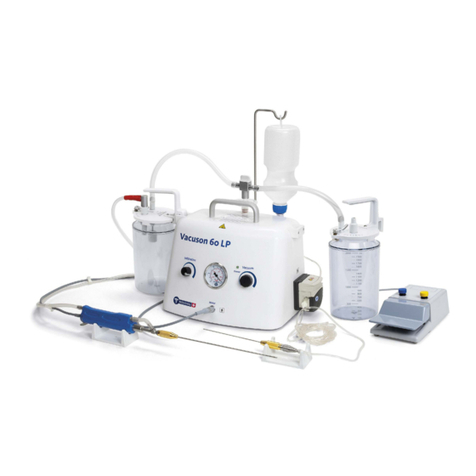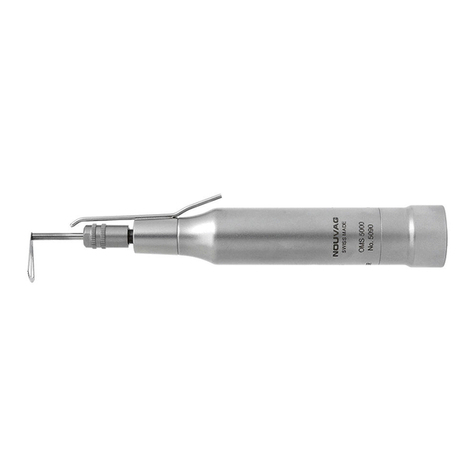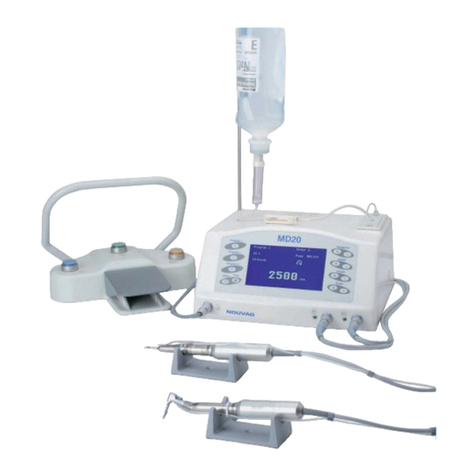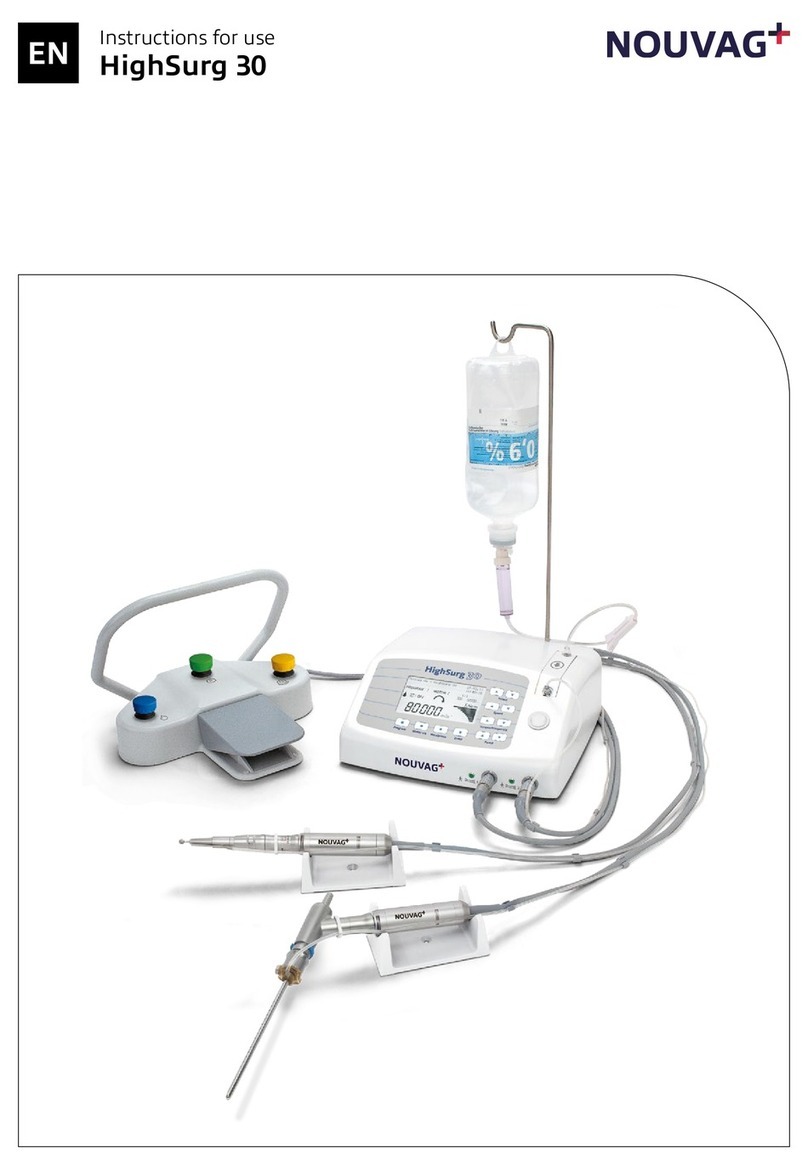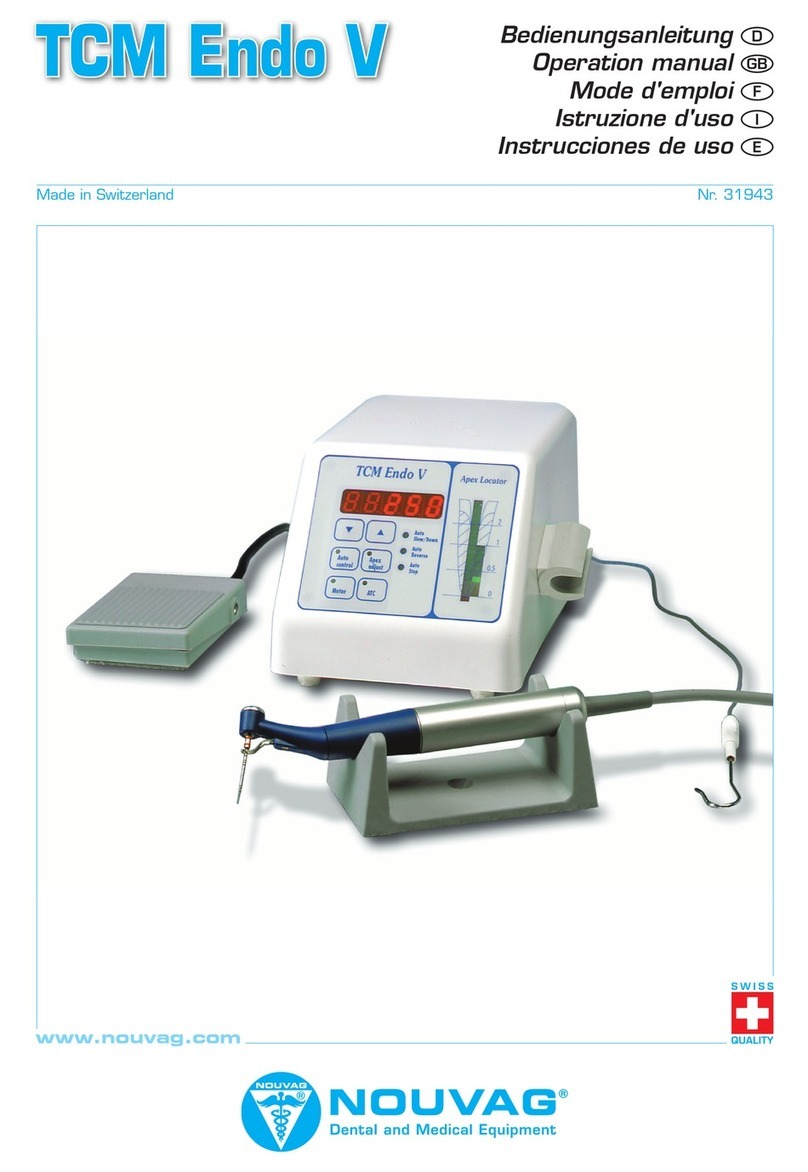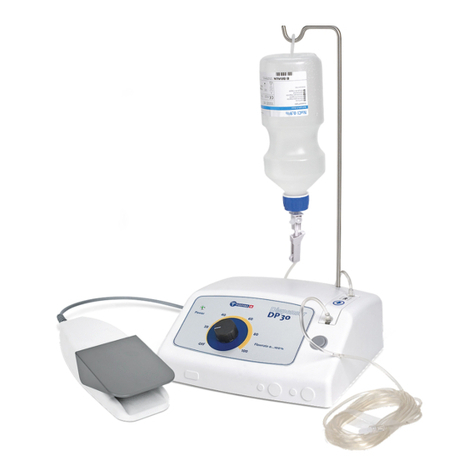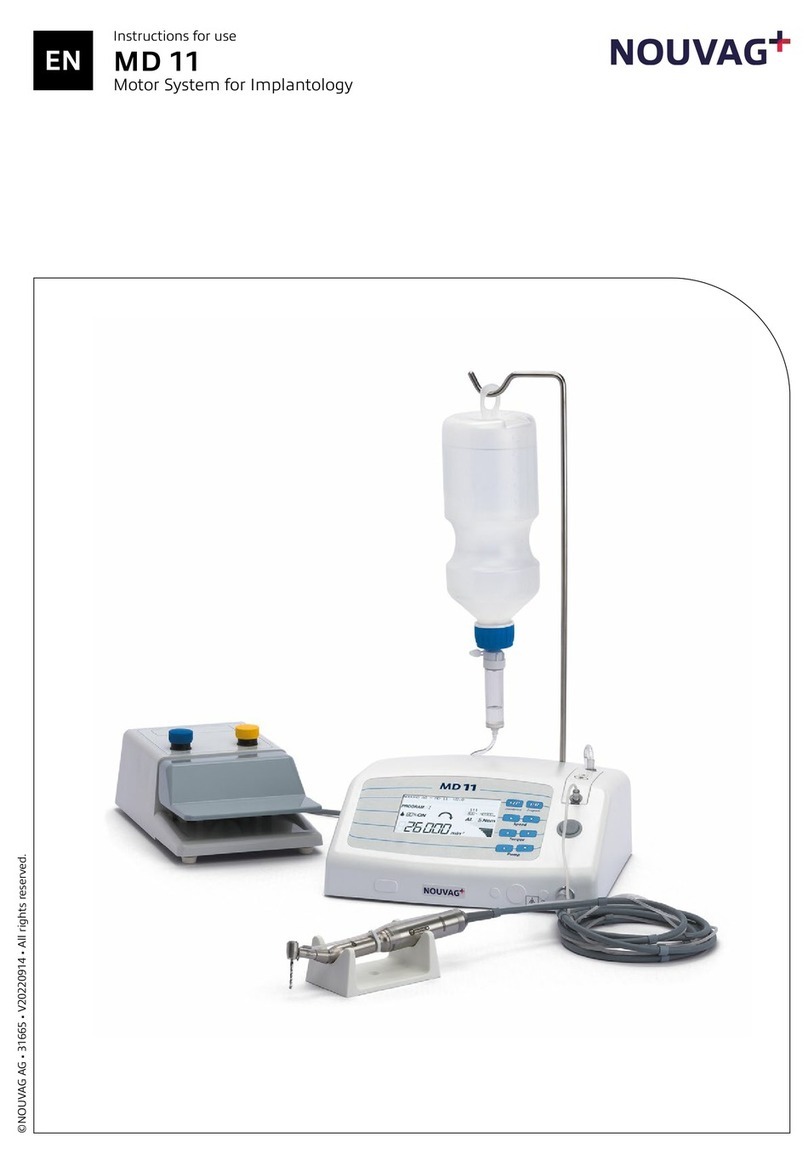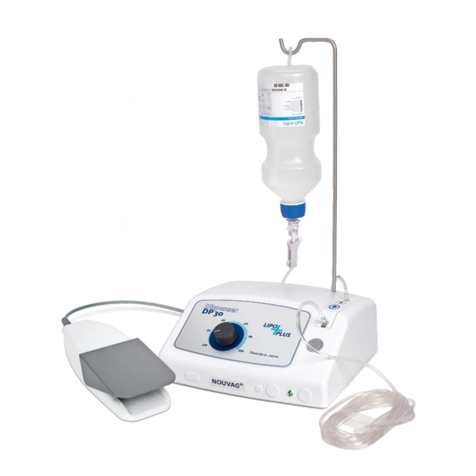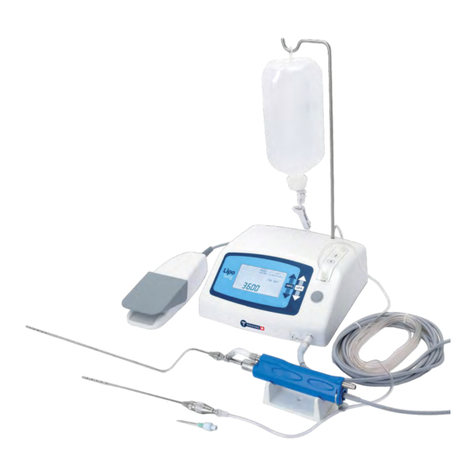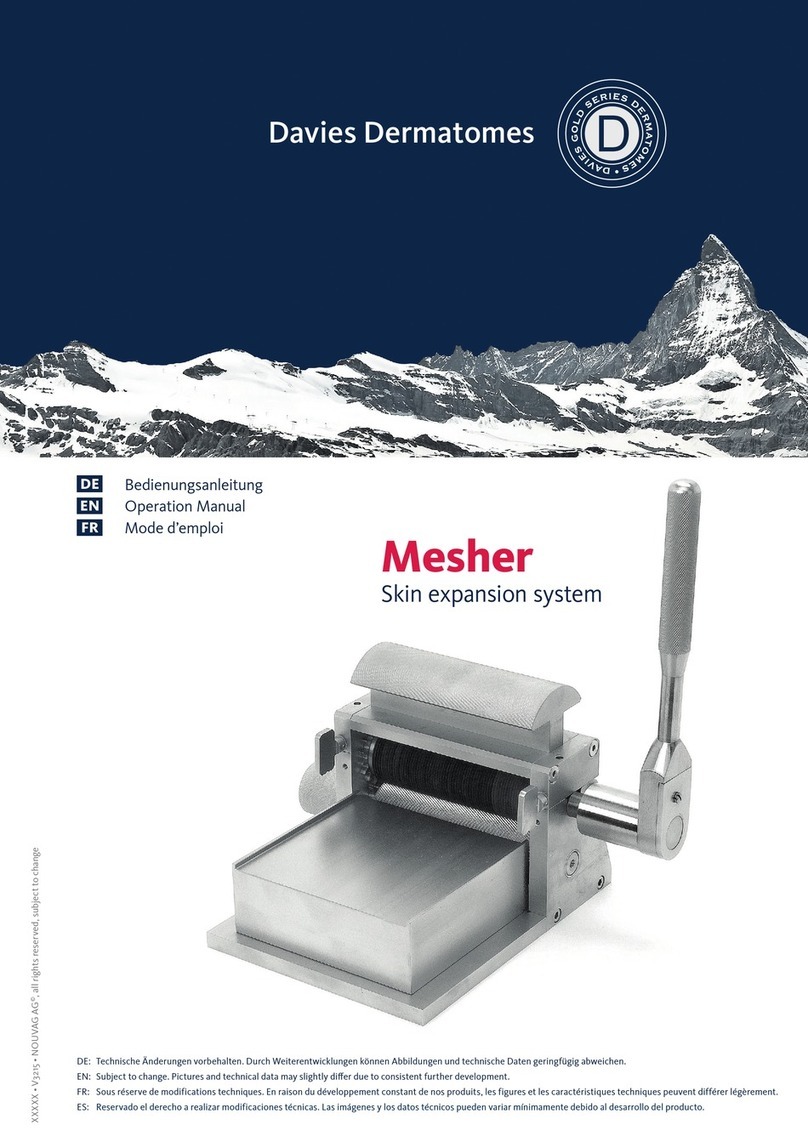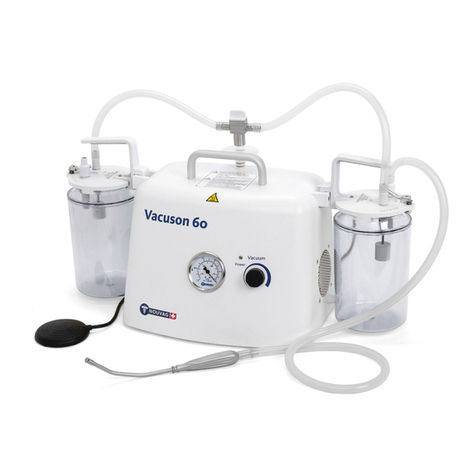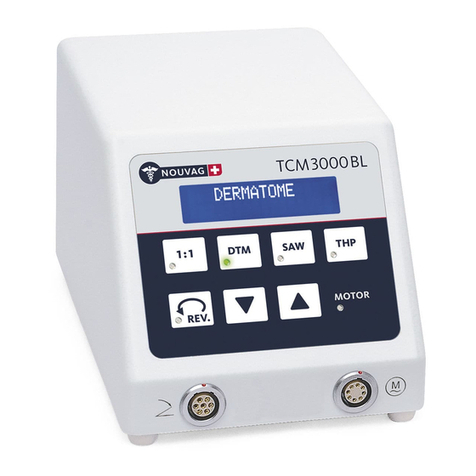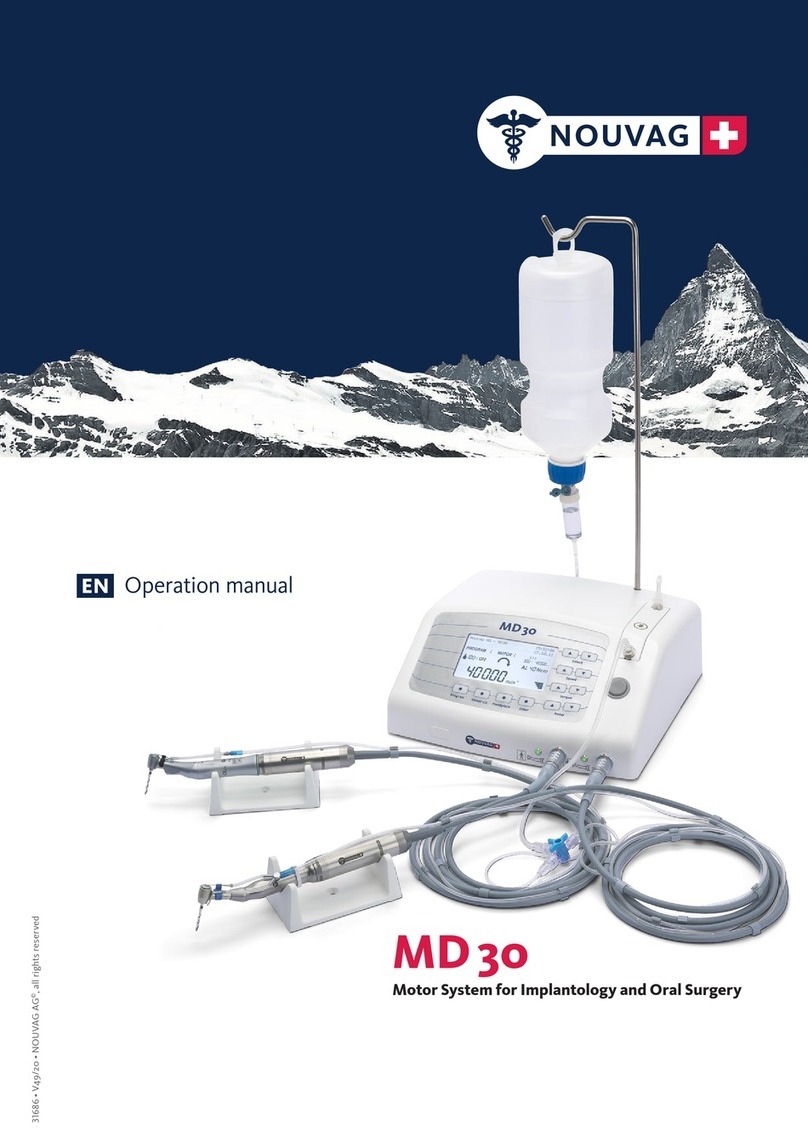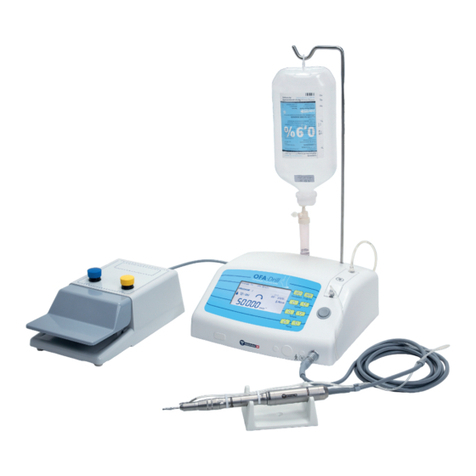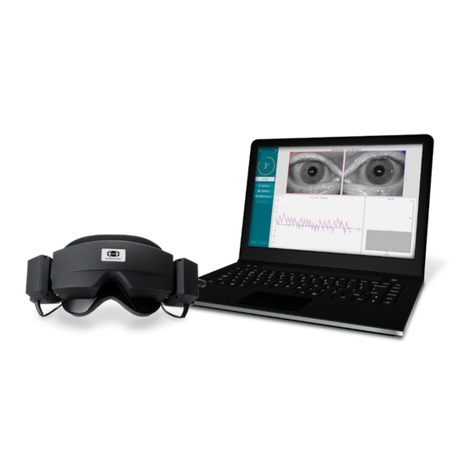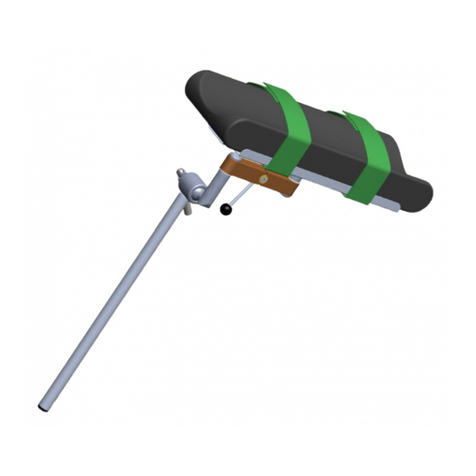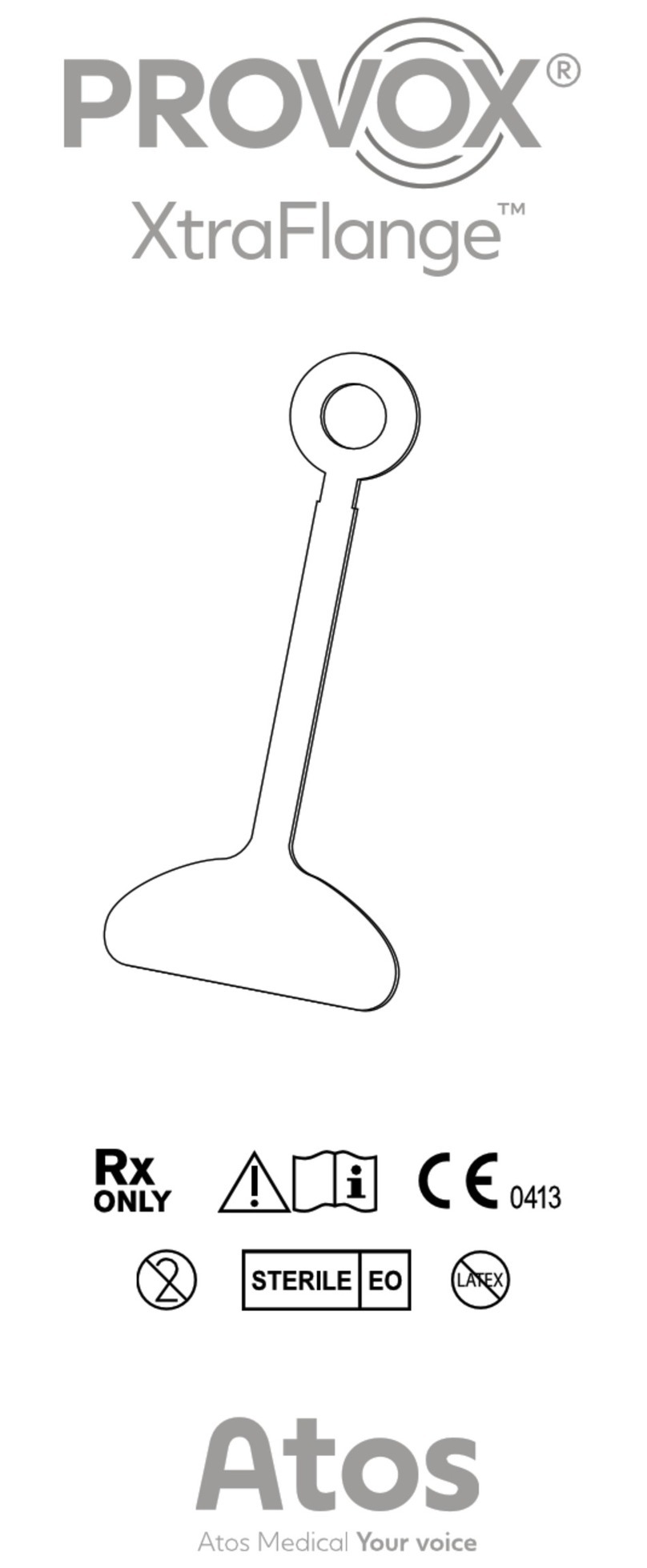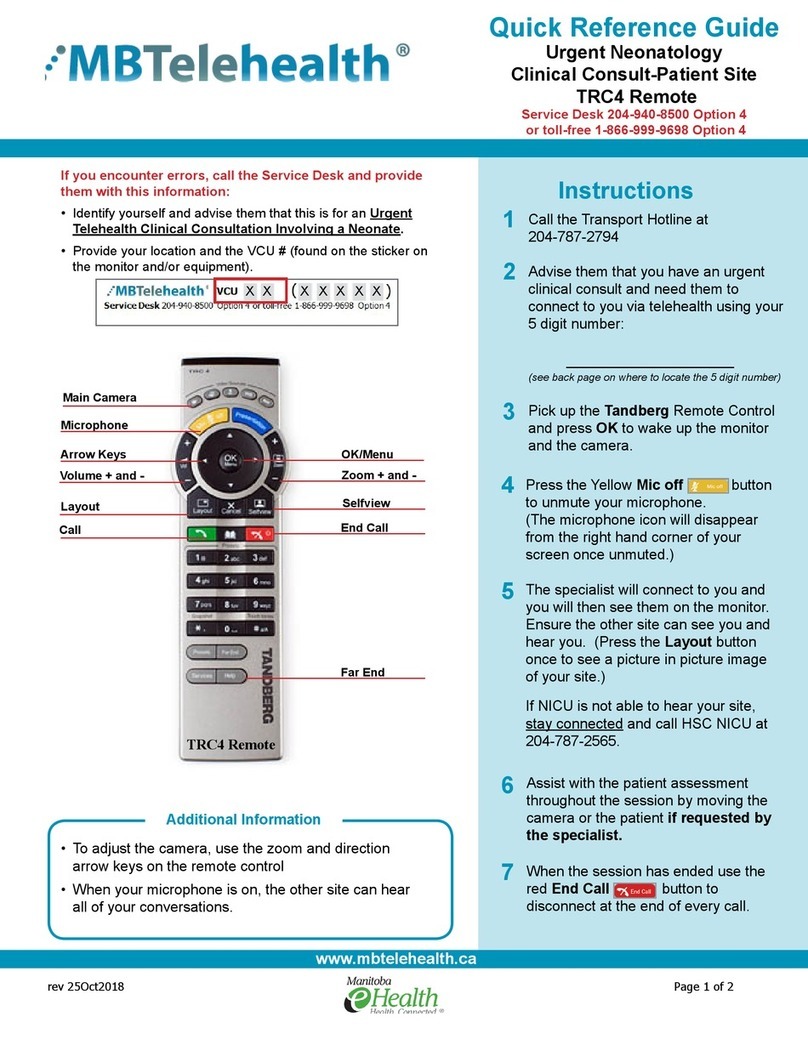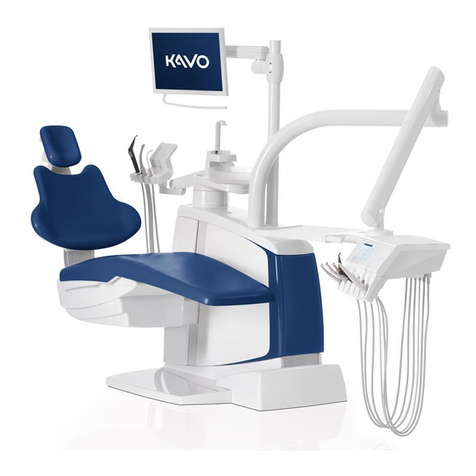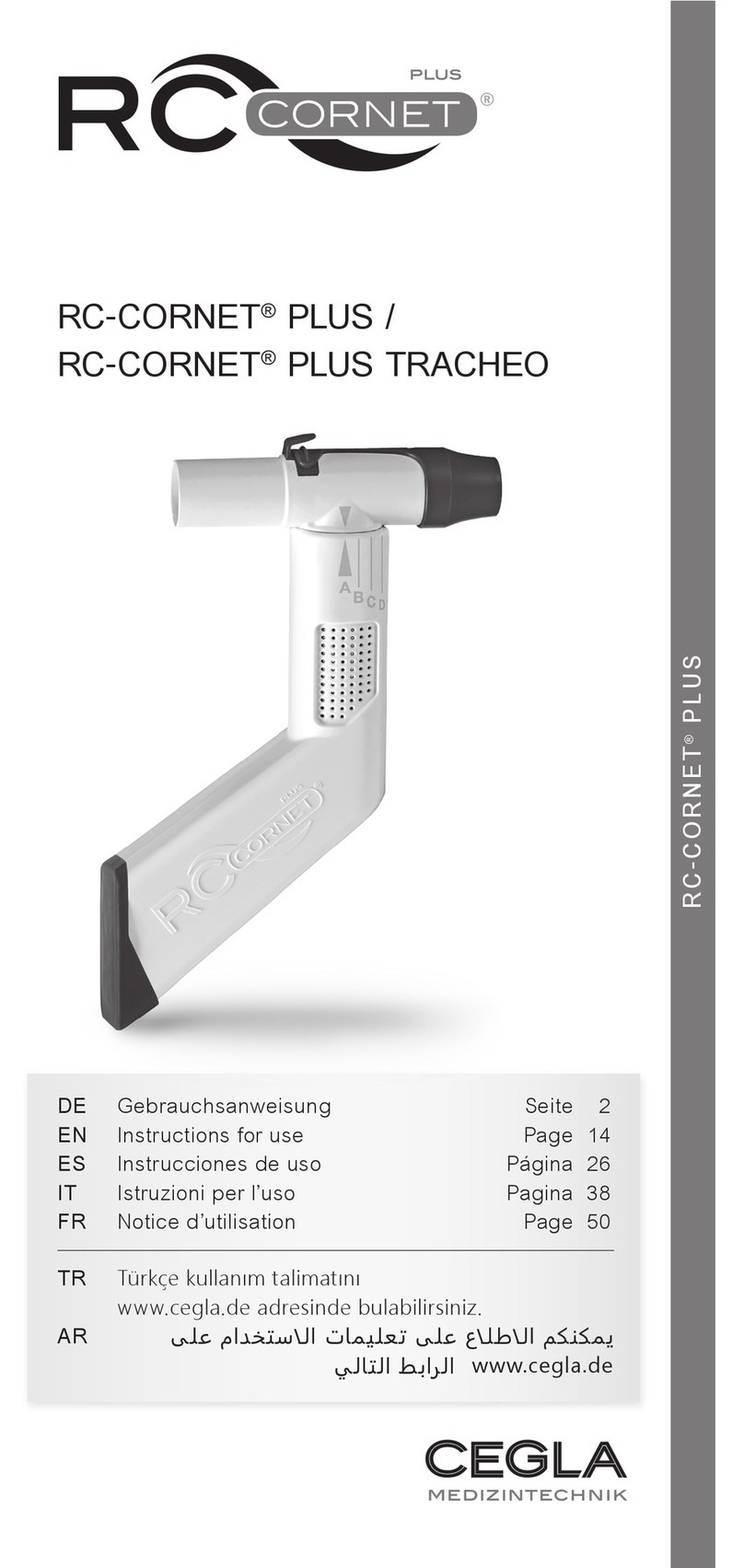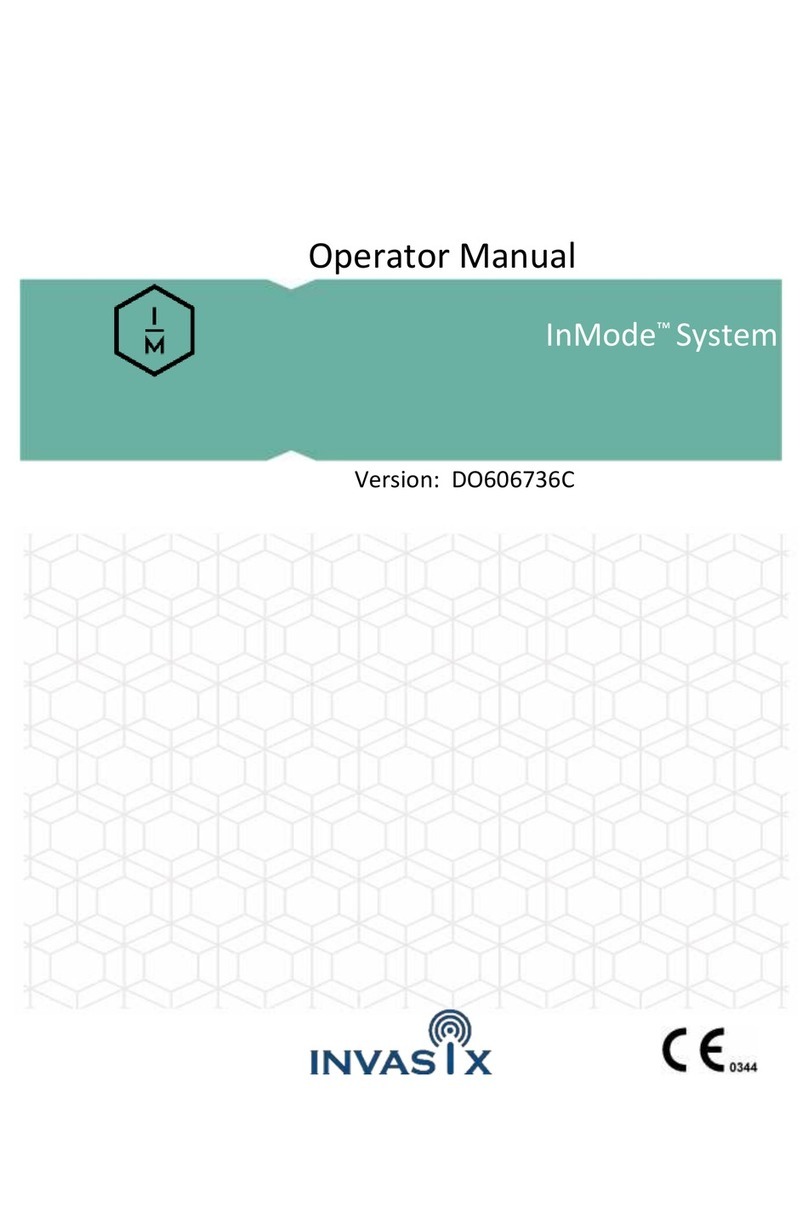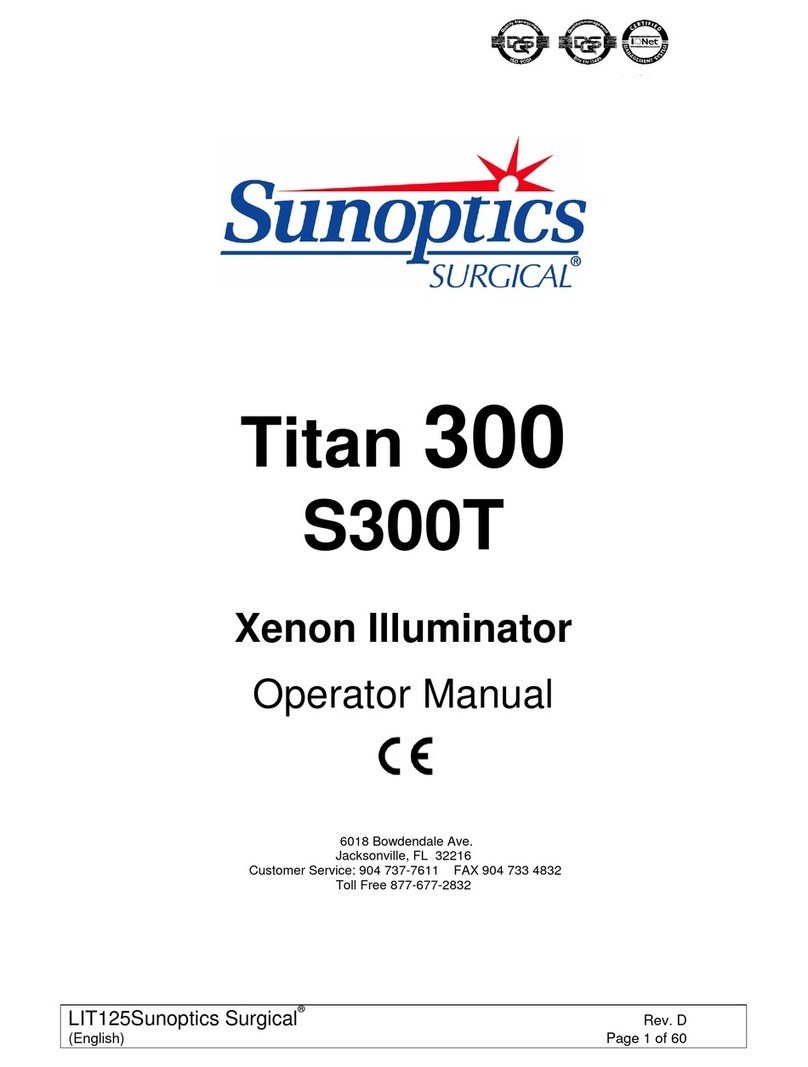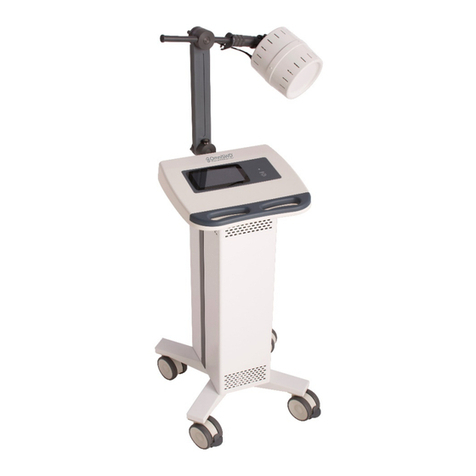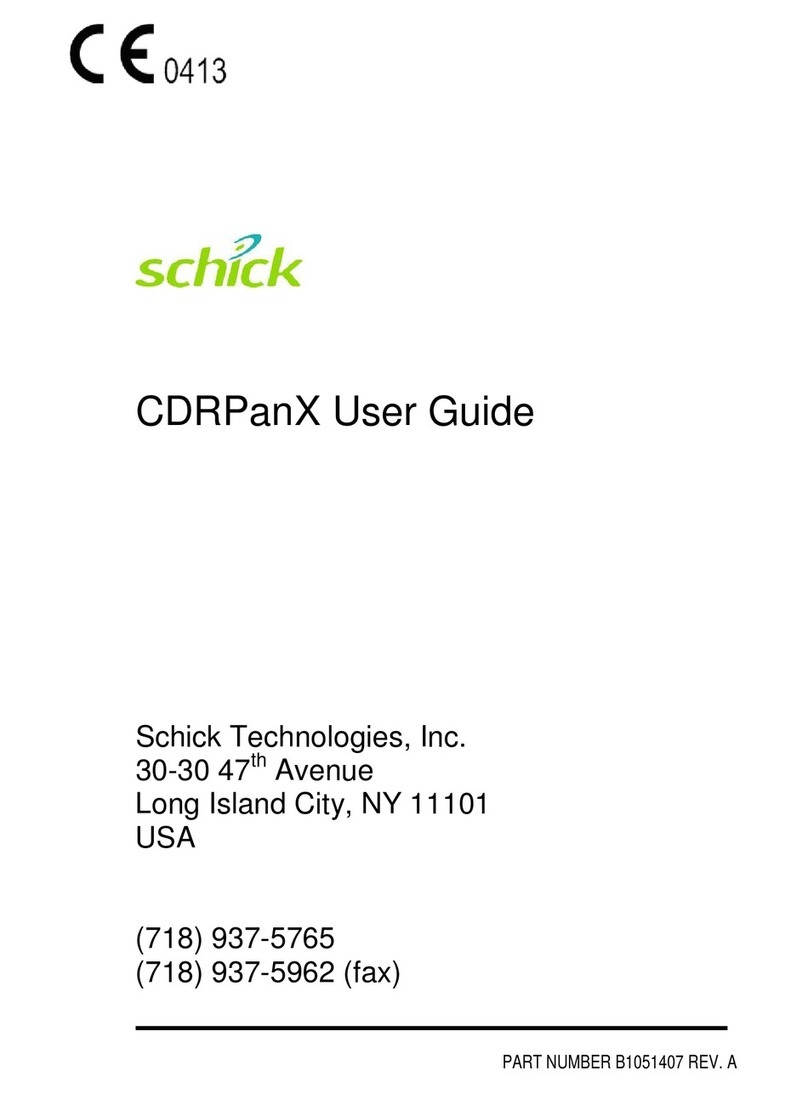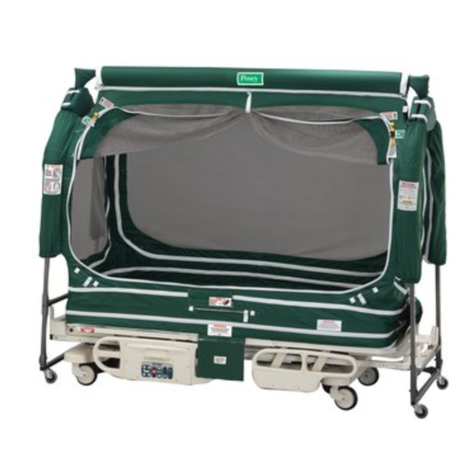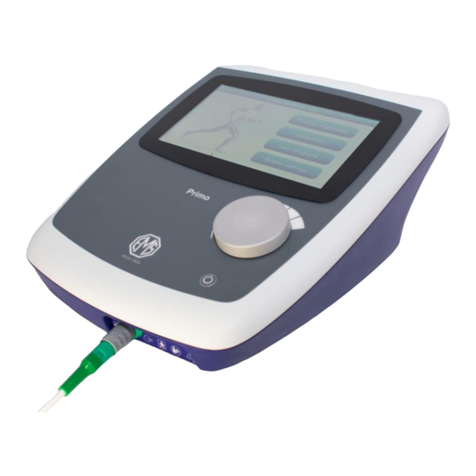
©NOUVAG AG • 31886 • V20230412 • All rights reserved.
MANUFACTURER AND SERVICE POINTS
A complete list of NOUVAG certified service points are found on the NOUVAG
website: Nouvag.com > Service
POST MARKET SURVEILLANCE
In the event of incidents related to the use of the medical device,
please contact immediately the manufacturer by email
To provide adequate information, please compile the incident question-
naire at the web address
Nouvag.com > Contact us > Incident questionnaire.
Switzerland
NOUVAGAG
St. Gallerstrasse 25
9403 Goldach
Phone +41 71 846 66 00
www.nouvag.com
Germany
NOUVAGGmbH
Schulthaissstrasse 15
78462 Konstanz
Phone +49 7531 1290 - 0
www.nouvag.com
Cleaning Mechanical cleaning
. After pre-cleaning place the micro saw and its accessories in the strainer
basket.
. Mechanical cleaning is only successful if the pre-cleaning, described above,
is adhered to!
. Cleaning is done using the Vario TD programme in the cleaning and dis-
infection unit (CDU). For the cleaning process it is advisable to use DI
water (fully desalinated water).
. After completingthe cleaning programme (inc. Thermal disinfection)check
the micro saw, the nut and the cooling clip for visible contamination in
grooves and gaps. Repeat the cleaning cycle, if necessary.
Automatic cleaning process (Vario TD programme)
. Pre-clean with cold water for minutes.
. Empty
. Clean for minutes at °C with . % alkaline or at
°C with . % enzymatic cleaner.
. Empty
. Neutralise with cold water for minutes.
. Empty
. Inter-rinse for minutes with cold water.
. Empty
Disinfection Mechanical disinfection
The cleaning/disinfection unit has a thermal disinfection programme which
follows after the cleaning. When performing mechanical thermal disinfec-
tion, give due consideration to the national requirements relating to the A
value (see DINENISO-). We recommend an A value of . for the
instrument. Disinfection must be carried out with DI water.
Warning
When inadequately rinsed or exposed to the disin-
fectant or detergent for too long, the instrument can
corrode. Please see the corresponding detergent and
disinfectant’s package insert for dwell times.
Drying Mechanical drying
Dry the micro saw using the cleaning/disinfection unit’s (CDU) drying cycle. If
required, manual drying can also be achieved by using a lint-free cloth. When
drying manually, take particular care with the grooves and gaps of the instru-
ment. Then spray the instrument again with Lubrifluid.
Every CDU must provide a corresponding drying procedure through the
manufacturer (see ISO-). Please follow the corresponding CDU-manu-
facturer’s directions and operating instructions.
Manual drying
Set up the micro saw in an upright position without the
nut and the cooling clip attached.
Dry the instrument for at least minutes. Then spray
it with Lubrifluid. Afterwards reassemble the nut and
the cooling clip back onto the instrument.
Manual
cleaning and
disinfection
. Immerse the micro saw handpiece after pre-cleaning for minutes in a bath with enzymatic
cleaner. Clean accessories such as e.g. the cooling clip and the nut for minutes in an ultra-
sonic bath. Follow the instructions of the manufacturer of the detergent.
. Perform a complete post-clean of the product under running drinking water, using a soft brush.
Intensely rinse, if there is any cavities and lumens existing, with a water pressure gun (or simi-
lar) for at least seconds.
. To remove the detergent, rinse the products under running city water (drinking quality) for at least
seconds.
Warning
Do not clean micro saw (hand-
piece) in an ultrasonic bath!
Manual
disinfection
After cleaning, immerse the products for minutes in a bath with a suitable disinfectant. It must be ensured that all surfaces are com-
pletely wetted with the disinfectant. Follow the manufacturers instructions of the disinfectant. After disinfection thoroughly rinse all
products with deionised water to remove the disinfectant ( >min.).
Manual
drying
Set up the micro saw handpiece vertically, separated from the cooling clip, to make sure the outflow of water is favored. Dry products
with a lint-free paper towel. Then dry with suitable compressed air in accordance with the RKI recommendation. Pay particular atten-
tion to the drying of hard to reach areas.
Inspection and
care
. First unscrew the union nut and remove the cooling clip.
. Perform a visual inspection for damage, corrosion and wear.
. Spray the handpiece for cleaning and care. NOUVAG recommends the use
of Lubrifluid. Attach the blue spray adapter to the spray can and spray
the handpiece from the coupling side for about seconds until only
clear liquid flows out of the electronic motor.
. Then wipe with a damp cloth (observe the instructions for use of the prod-
uct).
. After spraying the handpiece, re-install the cooling clip on the handpiece
and screw the union nut onto the collet chuck.
Sterilisation Sterilisation of the micro saw handpiece is performed with a fractionated pre-vacuum steam sterilisation technique (in accordance with
DINEN / DINEN) giving due consideration to the respective national requirements. Minimum requirements:
. Pre-vacuum phases:
. Sterilisation temperature: minimum °C – maximum °C
. Holding time: At least minutes (full cycle)
. Drying time: At least minutes
When sterilising several products during one sterilisation cycle, do not exceed the maximum steriliser load (see manufacturer’s details).
A drying cycle must be added in the case of autoclaves without a vacuum function. After sterilisation an immaculate sterilisation result
must be detected by examining the appropriate indications. According to the Robert-Koch Institute preparation ends with the document-
ed release for use of the medical device. If the sterilised micro-pencil saw is not used immediately after sterilisation, it must be labelled
with the sterilisation date on the packaging.
Storage Storing the sterile packaging
The sterilised product must be stored away from dust, humidity and contami-
nation. During storage, direct sunlight should be safely avoided. After the
expiry date has passed, do not use the product any longer.
Handling the sterile packaging
Before taking out the product, check for the packaging
to be intact. When taking out the product, follow the
respective aseptic procedures.
Information for
validating the
preparation
The above preparation process has been verified by a validated procedure. The following materials and machines were used:
. Alkaline cleaner: Neodisher®Mediclean; Chemische Fabrik Dr. Weigert GmbH & Co. KG
. Enzymatic cleaner: Neodisher®MediZyme; Chemische Fabrik Dr. Weigert GmbH & Co. KG
. Cleaning and disinfection unit: Miele G CD
. Rack trolley: Miele E
. Strainer basket/flush socket bar: mach (NOUVAG REF )
. Autoclave: Selectomat -HP (MMM)
. Sterile packaging: Sterisheet ; Broemeda Amcor Flexibles GmbH
Chemicals and machines other than those mentioned can also be used. In such a case consult the manufacturers or suppliers to find out
whether their products confer the same performance as the products that the procedure was validated with. If you should opt for a dif-
ferent procedure for reprocessing to the one given above, you are required to correspondingly establish the suitability
PROBLEM CAUSE SOLUTION
Motor is running but
saw is not moving
Saw handpiece is not
correctly coupled with
motor
Press saw handpiece firmly
against the motor until it snaps
into place. Check seat with coun-
termovement.
Saw blade is not
moving regularly
Saw blade is not cor-
rectly clamped
Clamp saw blade correctly and
tighten nut with the jaw spanner.
ACCESSORIES AND SPARE PARTSMALFUNCTIONS AND TROUBLESHOOTING
INFORMATION ON DISPOSAL
When disposing of the device, device components and accessories, the
regulations issued by the legislator must be followed.
When discarding the device components and accessories, please comply
with the issued statutory regulations.
REF DESCRIPTION QUANTITY
Jaw spanner
Lubricant spray LUBRIFLUID
Cooling clip
TECHNICAL DATA
REF nou
Weight g
Torque max. Ncm
Speed max. ’ rpm
Oscillation angle saw blade °
Transmission ratio :
Coupling to motor ISO
Clamping depth saw blade shank mm
Thickness saw blade , mm
There is no experience available from conducting other sterilisation procedures such as plasma sterilisation, low temperature sterilisation procedure, etc. Users
bear full responsibility if they use a procedure which differs from the validated sterilisation procedure described!
Please also comply with the applicable legislation in your country and the medical practice or hospital’s hygiene rules. This especially applies to the varying
requirements for an effective inactivation of prions.


